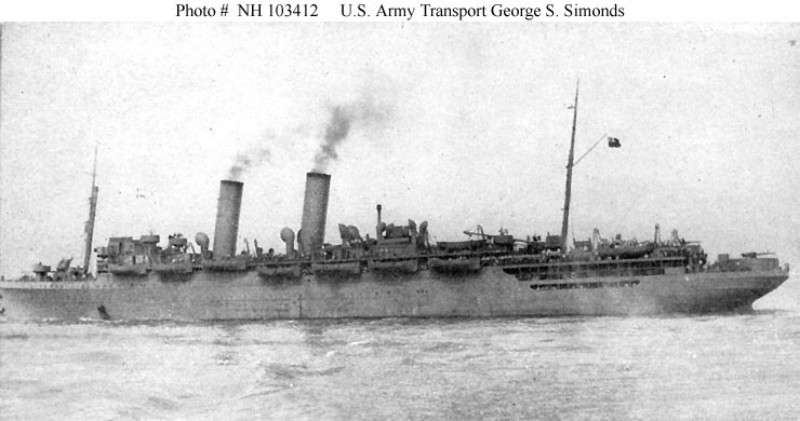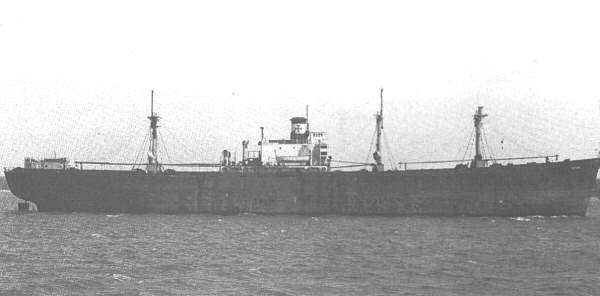 This is my fathers story put down from what I can remember of his
tales of his service during World War II. I will start form the
beginning, Lonnie Wilber Dietzel was born in 1911 the youngest of three
boys in the farming community of Jamestown Missouri. He completed
the 9th grade and worked on the family farm expecting to be a farmer
himself when the Great Depression struck. My father joined the
Civilian Conservation Corps (CCC) a public work relief
program for unemployed men, focused on natural resource conservation.
He worked mainly on the Missouri River driving trucks, constructing
wing dikes and levees during the 1930's and early 40's.
On the morning of Sunday, December 7, 1941 things changed. The United
states was attacked by the Japanese Empire thus entering the United
States in to World War II. Lonnie decided rather than waiting to
be drafted he would enlist into the United States Navy which almost did
not happen. Lonnie had smoked tobacco for a number of years and
the physician that was checking all enlistees for physical fitness
standards spent quite a while listening his chest and having him cough.
Lonnie was passed and was sent to the Naval Training Center in Great
Lakes, Illinois for his basic training on 1-23-1942. My father said many
times that he did not enjoy much of the basic training and marching was
the worst for him. One of the things he thought was humorous was
the marksman training the Navy provided. Now, you will have to know
that my father had grown up hunting and trapping all sorts of animals
and knew how to use a firearm. One day his crew was formed on the
parade ground and they were marched off to the armory where each man was
issued a rifle and ammunition. This was going to be the day the
Navy taught all these new sailors how to shoot and dad was looking
forward to doing something he was good at. Well, the Navy
instructors spent some time telling them how to break down, clean,
reassemble, aim, sight in, adjust the sights and many other things you
would need to know about shooting. Finally they were marched to
the shooting range where they were told to move to the firing line and
dry shoot the rifles (Fire without loading the rifle) and after each
man had a chance to dry fire there rifle they marched them back to the
armory and checked in their rifles. This was the extent of the
rifle training for the Navy. Some time right after my
dad completed all of his training and was granted his first leave he
want back to his family's farm. While back his brothers and dad
went out squirrel hunting and he pulled off a shot that was quite
impressive and needed a lot of luck and less skill to make.
This caused his dad and brother to ask if he learned to shoot like that
in the Navy and dad gave the Navy the credit. Back at basic training... dad was not liking it one bit and counting every
day until he would complete it. Well one morning during parade an
officer arrived and addressed the sailors. This officer explained
he was looking for volunteers for something called the Armed Guard and
if you stepped up you would get to leave right then! Lonnie
thought this was a way out of all this marching so he stepped up and
was ready to go.
I do not recall where my father attended his training for the Navy
Armed Guard but I know he was assigned to the Navy Armed Guard Center,
Brooklyn New York for the Atlantic service. To the best of my
recollection my father's first assignment to a ship was on a World War I
Oil Tanker. Being assigned to a Oil Tanker was not a coveted
detail to be on, remember there is a war going on. The Germans had
been using U-Boats (Submarines) for some time and very effectively in
what was called wolf packs. U-boats were spotted regularly
off the east cost of of the United States. This tanker was very
old and made lots of groans and bangs all the time. Lonnie said the did
not know if the ship would break up and sink or a U-Boat would torpedo
them he figured it was a 50-50 chance that either would happen.
Well the first part was to arrive in Aruba and take on Oil. When
they arrived in Aruba while on watch at night he could see burning
tankers all around that had been torpedoed. The net half of the
trip was to Texas to drop the shipment of oil and then return to
NY with fuel. Dad said that this trip was the most frightening all
the way around from start to end of any that he did during the war.
I can not remember a lot of details but here are some
things I do remember him telling me.
During any other convoy trip a sailor slid off the deck in to the water they threw life vest
and preserver over to him. The man was not picked up by following ships
and a service was held for him the next day. Ships could not stop as this
would make an easy target for the U-Boats.
While in convoy the ship immediately behind his was torpedoed and
sunk.
While in London a German buzz bomb came in flying low and looked like
it was not going to clear the mast of the ship. dad was seconds
away form jumping off the boat. He thought he was a goner.
Lonnie spent D-Day on the Isle of White aboard ship the
cargo would not be needed until after the invasion secured a foothold. about a week after
D-Day loaded with metal air field plated landed in
Cherbourg France went into town with the LT could see battle
damage on buildings and in and around German bunkers. Dad picked
up two German 37mm anti aircraft shells and took them back to the ship.
he removed the projectiles and powder long black spaghetti and disarmed
the fuses. this two shells were made into two table lamps which
are still in the family.
On one trip when arriving in port the ships chief engineer paid Lonnie to
help him carry a large trunk off the ship. A short time later it
was discovered that all the tool were missing for the ships engine room
and machine shop.
Dad said the trunk was heavy as hell but did not think anything about it
at the time. He was glad no one stopped him because he
would be in the brig for stealing the tools and yes he got his money up
front.
Dad said that he enjoyed haggling with the locals buying blankets and
other trinkets.
While in Brussels got a kick out of seeing Manneken-Pis.
Rue de l’Etuve, is as funny as it is well known. Crowds of tourists
patrol the meandering cobbled streets near Brussels’ Grand’ Place hoping
to find this small statuette of a little boy in the midst of a
never-ending pee. Sometimes known as ‘Little Julian’, the statue is, in
its own way, a typically Belgian symbol of cultural self-mockery. Since
its creation by J Duquesnoy in the 17th century, the Manneken-Pis has
attracted a great deal of attention, having been stolen (by the English
in 1745 and the French in 1747), vandalized and dressed in over 600
costumes, which are on display at the City of Brussels Museum.
Lonnie made at least 11 trips across the Atlantic during
the war. Some of the locations that he went into port were:
Argentina, Buenos Aires Peru, London England, Cherbourg France,
Brussels Belgium, Cape Town South Africa, Casablanca Morocco, Cairo
Egypt, Karachi Pakistan, India.
My Father was processed out of the Navy on
12-24-1945 in San Pedro California he was married about one month to my
Mother at the time.
Links about the Navy
Armed Guard
Navy Armed Guard
Center, Brooklyn Photos

1943 Served on U.S.
Army Transport George S. Simonds


Completed in 1915
as S.S. Great Northern, this ship served as USS Great
Northern in 1917-1919, USAT Great Northern in 1919-1920 and
as USS Columbia (AG-9) in 1921-1922. In 1942-1946 she was U.S.
Army Transport George S. Simonds
USAT_Great_Northern
History of the ship
1944
Served on S.S. Francis D. Culkin

Francis D. Culkin 1944 WSA (Wessel, Duval & Co, NY)
1947 THOMAS F. BAKER, Wessel, Duval & Co, NY.
1950 Gulf Range SS Corp, NY.
1954 META D, Trident Transport Corp, NY.
22.2.55 aground in fog near Selsey, English Channel. 25.2.55 Towed
Southampton. CTL.
1955 PERIOLOS, Palizada Cia Nav, Panama - Liberian flag (G.
Nicolaou, London)
1959 (Tropis Shpg.Co, London)
1960 transferred Greek flag.
1964 (Pegasus Ocean Services, London)
20.10.67 aground near Colombo after anchors dragged in bad weather.
Total loss.
Served on S.S. Raymond B. Stevens
No Photo
New England
Shipbuilding Corp., East Yard EC2-S-C1 Type Hull Number 3016
S.S
Raymond B. Stevens 09 08 4.44 1961 Scrapped Philadelphia
ARMED GUARD VOYAGE REPORTS April 25, 1944 to December 5,
1944
This is a .PDF file of Navy Reports S.S
Raymond B. Stevens.

AS, S2/C, S1/C, COX, BM2/C
|

